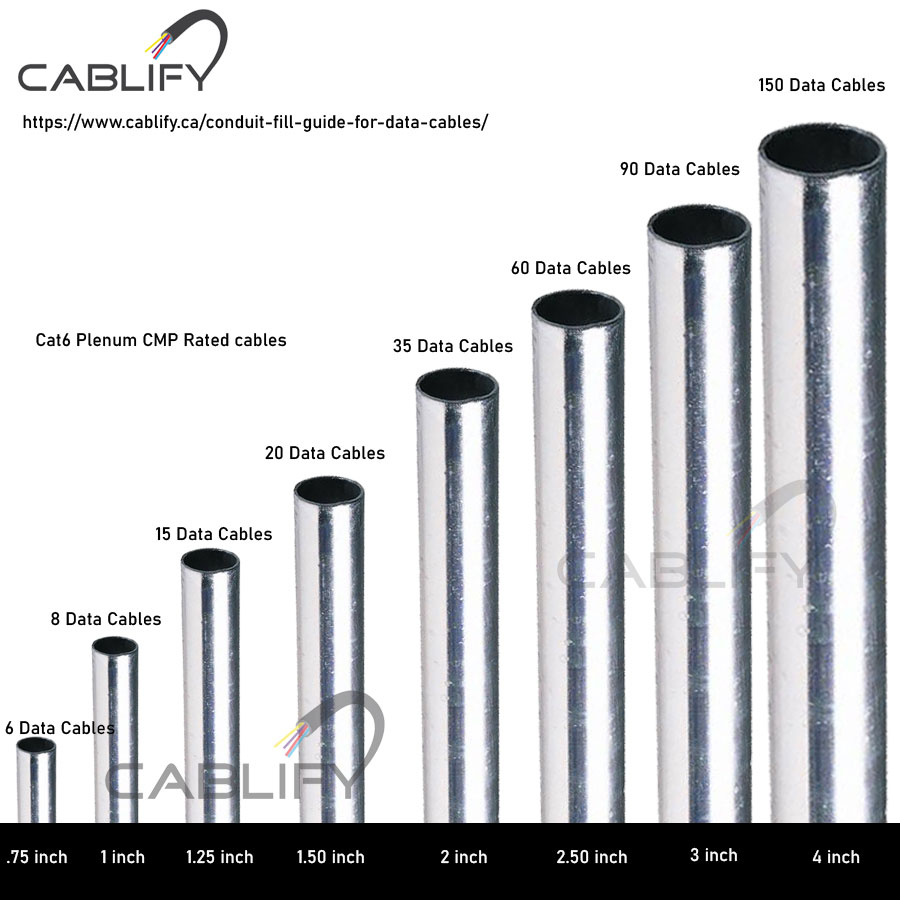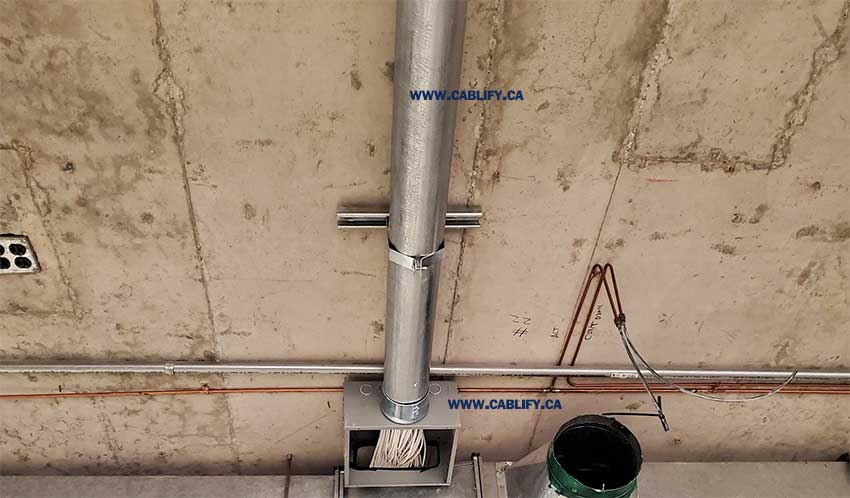[DISPLAY_ULTIMATE_SOCIAL_ICONS]
Conduits are a part of Horizontal pathway cabling and are used to keep the cable from resting on top of the false ceiling or being exposed if the ceiling is open. Due to this reason, sometimes there is a requirement to run cables in the Conduit. Without knowing how many cables can fit into a Conduit, it would be hard to estimate. You do not want to run a very large Conduit for a small bundle of data cables and at the same time, you don’t want the cables to not fit in a small Conduit. Here is the Conduit Fill Guide which will help you use the optimal Metal or Plastic conduit to accommodate various categories of Network Cables. This table is based on the maximum number of cables permitted in the conduit and is calculated on the area of the cables with 40% of the conduit filled. Conduit should only be filled to a maximum of 60 percent, so this margin leaves you with room for future growth.
Remember, Attenuation values can also increase by 2 to 3 percent if the cable is installed in a metal conduit so install EMT Conduit only when necessary. Do not install data cabling in the same conduit as electrical wiring.
A conduit size with a diameter of .75 inches or a 3/4 inch Conduit can accommodate up to 6 Cat6 plenum-rated cables. This may vary from one manufacturer to another but as a thumb rule, the average is 6 Data cables with a 40% fill ratio capacity for the EMT Conduit.
1 inch EMT Conduit should fill approx 8 Data cables CMP
1.25 inch EMT Conduit – 15 Cat6 Cables
1.50 inch EMT Conduit – 20 Cat6 Cables
2.00 inch EMT Conduit – 35 Cat6 Cables
2.50 inch EMT Conduit – 60 Cat6 Cables
3.00 inch EMT Conduit – 90 Cat6 Cables
4.00 inch EMT Conduit – 150 Cat6 Cables

Pulling Cables through the Conduit needs great skills and you need to make sure the Cable is not damaged or twisted. The most commonly used tool for pulling wire through the conduit is a fish tape, an electrician’s tool with a long, flat metal wire wound inside a wheel-shaped spool. A nylon string can also be used depending upon the location and situation.



